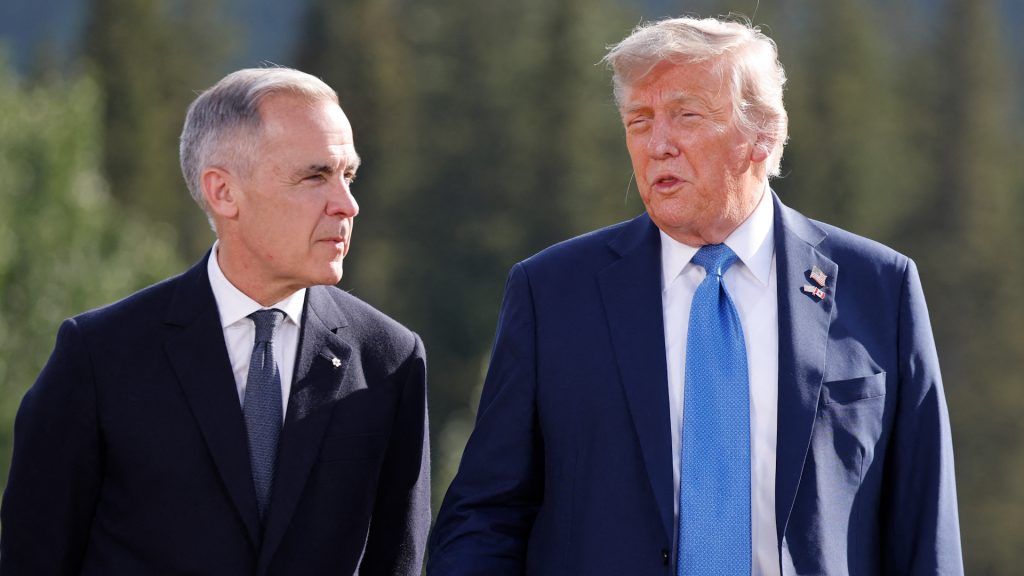Trump threatens 35% tariff on Canadian imports, escalating trade tensions

Canada and the United States brace for a new wave of trade tensions after President Donald Trump threatened a 35% tariff on all Canadian imports. The move, set to take effect Aug. 1, could revive longstanding disputes between the two allies and threatens to disrupt one of the world’s largest trading relationships.
Previously, Canadian imports outside the U.S.-Mexico-Canada Agreement (USMCA) faced 25% tariffs, while energy imports were subjected to 10%.
Canada is the United States’ second-largest trading partner, accounting for 13% of all U.S. trade so far in 2025, according to the U.S. Census Bureau. The two countries exchanged more than $311 billion in goods through May, with Canada ranking first for U.S. exports and second for imports.
Why is Trump imposing new tariffs on Canada?
In a letter posted on Truth Social, Trump accused Canada of financially retaliating against the United States and failing to cooperate in efforts to curb fentanyl trafficking. He claimed the tariffs were necessary to protect American interests and address what he described as Canada’s lax enforcement on drug smuggling.
The U.S. ran a $25.6 billion goods trade deficit with Canada through May 2025, according to Census Bureau data. That ranks Canada 10th among U.S. trade deficit partners — well below China and Mexico.
The new tariff applies broadly to all Canadian imports, beyond existing U.S. duties on steel, aluminum and automobiles.
How has Canada responded?
Canadian Prime Minister Mark Carney said in a post on X that Canada would continue negotiating with the U.S. ahead of the Aug.1 deadline. “The Canadian government has steadfastly defended our workers and businesses,” he said.
Carney reaffirmed cooperation with Washington on the fentanyl crisis but pushed back against Trump’s characterization of Canada’s role. Canadian officials have disputed claims that fentanyl is entering the U.S. in significant quantities from the north.
“Canada has made vital progress to stop the scourge of fentanyl in North America,” Carney said. “We are committed to continuing to work with the United States to save lives and protect communities in both our countries.”
U.S. Customs and Border Protection reported just 43 pounds of fentanyl seized at the northern border last year, compared to more than 21,000 at the southern border.
What triggered this trade dispute?
The latest flare-up follows Canada’s digital services tax proposal targeting major U.S. tech companies. Trump called the measure an “attack” and halted trade talks in late June. Canada later dropped the tax to restart negotiations and imposed a 50% surcharge on steel imports exceeding quota limits.
Despite some progress, Trump revived tariff threats, warning Canada not to retaliate. In his letter, Trump warned of further increases if Canada imposes new countermeasures.
What are the possible economic consequences?
Canada sends about 75% of its exports to the U.S., totaling more than $410 billion in goods last year, according to NBC News. Sectors such as automotive manufacturing, metals and energy are particularly vulnerable to a blanket tariff.
U.S. stock futures dropped immediately after Trump’s announcement, with the Dow Jones Industrial Average projected to fall more than 200 points.
With negotiations ongoing, Carney said Canada will continue building economic resilience and expanding global trade ties. Talks are expected to continue in the coming weeks as both countries approach the Aug. 1 deadline.





